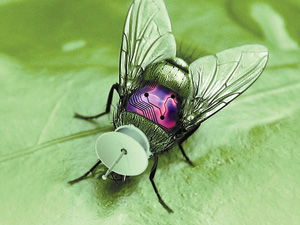INDIAN ARMED FORCES CHIEFS ON OUR RELENTLESS AND FOCUSED PUBLISHING EFFORTS

The insightful articles, inspiring narrations and analytical perspectives presented by the Editorial Team, establish an alluring connect with the reader. My compliments and best wishes to SP Guide Publications.

"Over the past 60 years, the growth of SP Guide Publications has mirrored the rising stature of Indian Navy. Its well-researched and informative magazines on Defence and Aerospace sector have served to shape an educated opinion of our military personnel, policy makers and the public alike. I wish SP's Publication team continued success, fair winds and following seas in all future endeavour!"

Since, its inception in 1964, SP Guide Publications has consistently demonstrated commitment to high-quality journalism in the aerospace and defence sectors, earning a well-deserved reputation as Asia's largest media house in this domain. I wish SP Guide Publications continued success in its pursuit of excellence.
- Indian Air Force Aims for Full Indigenous Inventory by 2047 — Air Chief Marshal A.P. Singh
- General Upendra Dwivedi takes over as the Chief of the Army Staff
- Rajnath Singh assumes charge as Defence Minister for the second consecutive term
- Admiral Dinesh K. Tripathi assumes Command of the Indian Navy as 26th Chief of the Naval Staff
- Prime Minister witnesses 'Bharat Shakti' – a Tri-Services Firing and Manoeuvre Exercise in Pokhran, Rajasthan
Insect cyborgs to sniff out explosives

The Pentagon is trying to develop “insect cyborgs” able to sniff out explosives, or “bug” conversations by lurking unseen in enemy hideouts with micro-transmitters strapped to their bodies. The US Department of Defense is considering fielding an army of remote-controlled insect spybots as scouts. Defense Advanced Research Projects Agency (DARPA) says it is seeking “innovative proposals to develop technology to create insect cyborgs,” by implanting tiny devices into insect bodies while the animals are in their larva or pupal stage.
The devices DARPA wants to implant are micro-electro-mechanical systems, or MEMS. MEMS technology uses tiny silicon wafers like those used as the basis for computer microchips. But instead of merely laying circuits on them, MEMS technology can actually cut and shape the silicon, turning the chip into a microscopic mechanical device. This transforms the insects into “predictable devices that can be used for various micro-UAV missions requiring unobtrusive entry into areas inaccessible or hostile to humans.”
Cornell University has implanted a silicon chips inside flying insects to control their movement. The results were published on June 22 by AZoNano. These “insect cyborg sentinels” ranging from cicadas to dragonflies are a new pass in cyborg technology. The project intends to control the insects’ movement by motion trajectories obtained from GPS coordinates or from using an ultrasonic based remote control. Gaining control of an insect’s movement is necessary because it enables scientists to position the insect in an area where a toxic substance is suspected to be present.
Insect Cyborg Sentinels combine living system technology with nanosystem technology, taking the best that a living system has with the best that engineers can do in building nanosystem technologies. Insects can fly up to two weeks without stopping, possessing an aerodynamic ability well developed over millions of years of evolution. The future shows DARPA arming these cyborgs with SWARM technology to be used as an offensive asset as well. The project is funded by the DARPA which has a full hybrid insect micro-electro-mechanical systems (HI-MEMS) programme.





